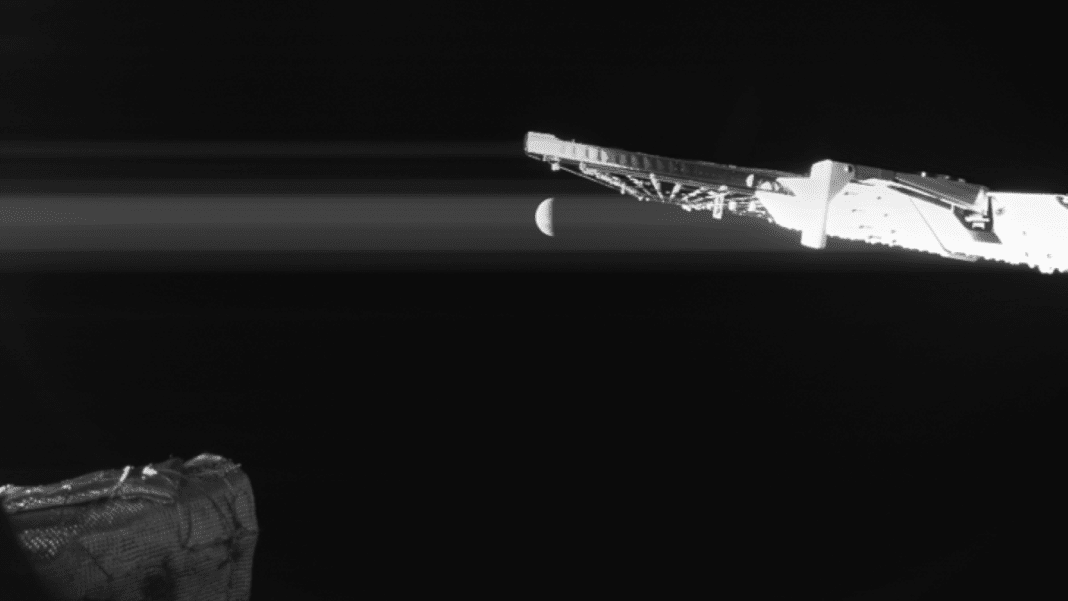JAPAN: The BepiColombo mission, a joint effort between the European Space Agency (ESA) and the Japan Aerospace Exploration Agency (JAXA), is gearing up for its third close encounter with Mercury, the innermost planet of the solar system. Scheduled for Monday, June 19, the flyby will allow the spacecraft to capture captivating new images of the elusive planet.
During the flyby, BepiColombo will zoom past Mercury at an incredibly close distance of just 147 miles (236 kilometres) at 3:34 p.m. EDT (1934 GMT). This proximity surpasses the orbital paths of the mission’s two orbiters, marking a significant milestone in their journey.
However, the primary objective of this flyby is not to capture stunning close-up images of Mercury’s surface but to leverage the planet’s gravity to slow down the spacecraft. By utilizing Mercury’s gravitational pull, BepiColombo aims to enter the planet’s orbit in late 2025.
Despite being approximately ten times closer to Earth on average than Jupiter, it takes an equal amount of time to reach Mercury as it does the gas giant. This lengthy time is due to the constant need to brake against the powerful gravitational force exerted by the sun.
The BepiColombo mission, which commenced in 2018, incorporates carefully planned flybys of planets along its trajectory around the sun.
Previous flybys have occurred twice near Mercury, in October 2021 and July 2022. The spacecraft has also visited Earth once and Venus twice as part of its journey.
As BepiColombo nears Mercury, it will experience the planet’s gravitational influence, resulting in a reduction in velocity magnitude and a change in direction.
Frank Budnik, an ESA flight dynamics expert, explains that during the flyby, the spacecraft’s speed relative to Mercury will be 2.2 miles per second, slightly over half the speed of its previous approaches.
The flyby will further decrease the spacecraft’s velocity magnitude compared to the sun by 0.5 miles per second (0.8 km/s) and modify its trajectory by 2.6 degrees.
Before Mercury ultimately captures BepiColombo, three more flybys are planned. These will occur in September 2024, December 2024, and January 2025.
Each flyby contributes to the spacecraft’s gradual deceleration, paving the way for its successful insertion into Mercury’s orbit.
En route to Mercury, BepiColombo’s operational instruments provide scientists with a unique opportunity to measure the boiling environment surrounding the planet.
Additionally, the spacecraft carries three low-resolution monitoring cameras that will capture black-and-white images of the largely unexplored rocky world during the flyby.
The findings from the previous two flybys have already yielded interesting scientific results, including measurements of Mercury’s southern inner magnetosphere and the composition of charged particles in that region.
Johannes Benkhoff, a BepiColombo project scientist at ESA, emphasized the significance of collecting data during flybys to ensure the instruments’ proper functionality and to compare the data with that gathered by NASA’s MESSENGER spacecraft during its mission from 2011 to 2015.
Comprised of two stacked orbiters, the BepiColombo spacecraft is currently traversing the solar system.
While the spacecraft’s panels cover some of the instruments inside during the cruise, two instruments designed to measure the shape of Mercury’s surface and study its gravitational field will collect data for the first time during the upcoming flyby.
Unfortunately, the orbiters’ primary high-resolution cameras will not be available until the later stages of the mission.
BepiColombo’s close encounter with Mercury presents a remarkable opportunity for scientific exploration and promises to deliver exciting new insights into the mysterious innermost planet of our solar system.



